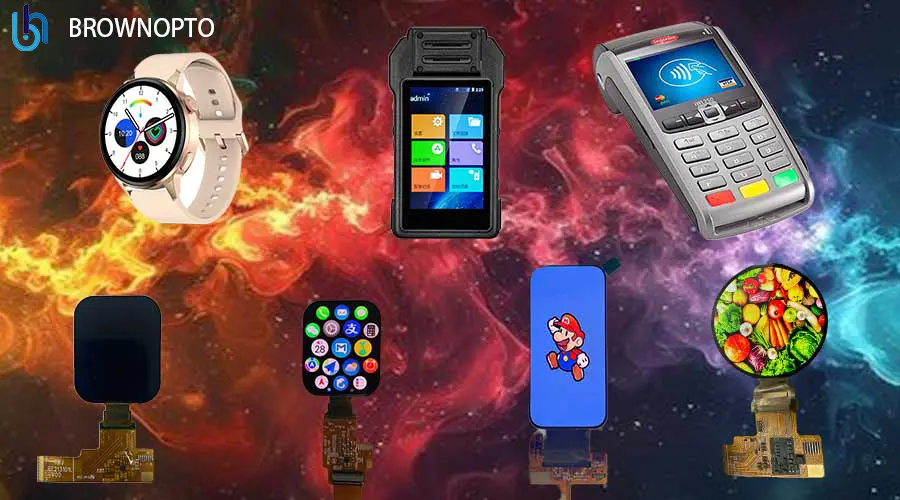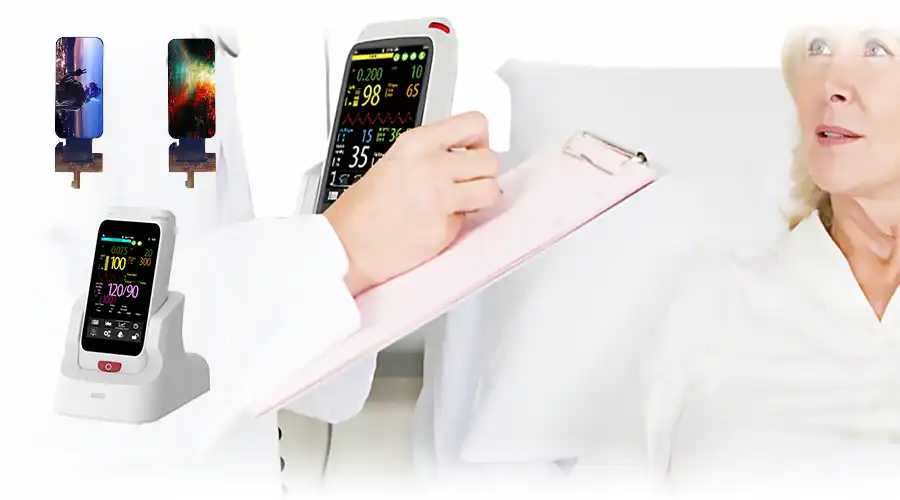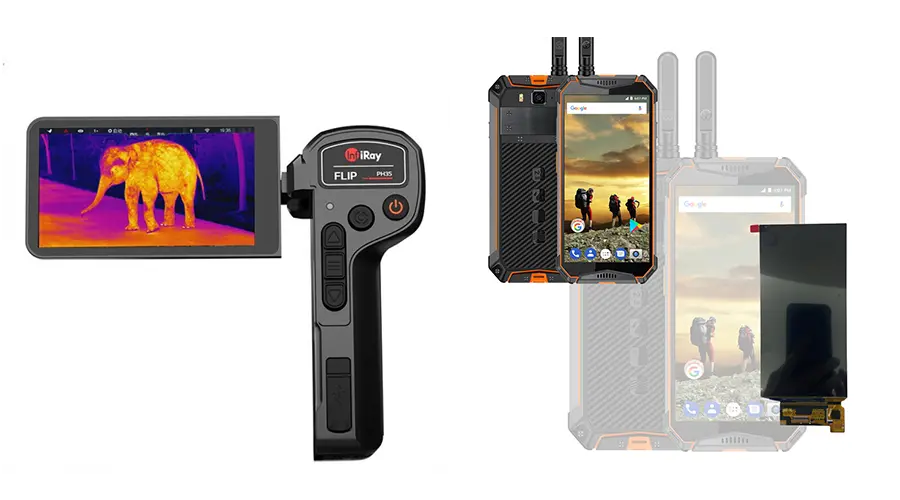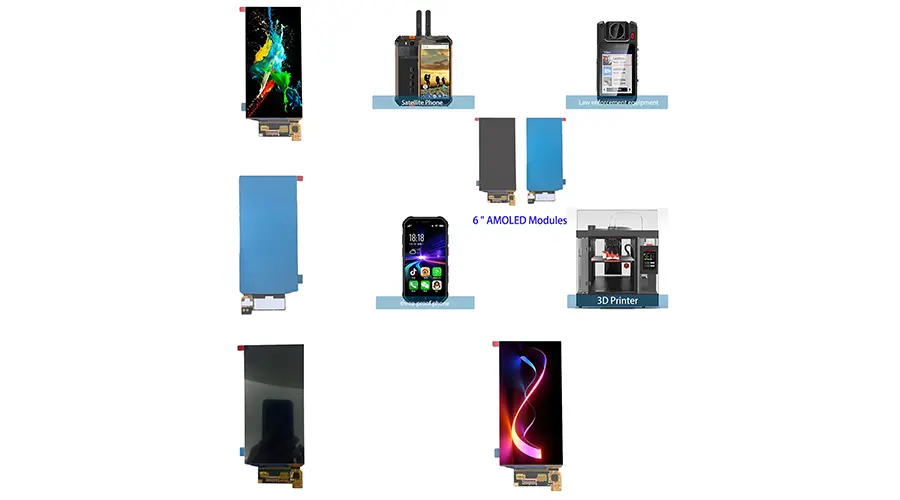Discover how industrial OLED displays enhance compact control systems with high contrast, low power, and seamless integration.
📋 Table of Contents
Introduction – Why OLED Displays Are Ideal for Compact Control Systems
As industrial automation, IoT, and portable test equipment grow in complexity, the demand for high-performance, space-efficient displays has never been greater. Traditional LCDs struggle with contrast, viewing angles, and power consumption—especially in compact control systems. Enter the OLED 디스플레이, a self-emissive technology that delivers superior image quality, ultra-thin profiles, and energy efficiency.
이 실제 사례 연구에서는 6.0인치를 살펴보겠습니다.내장형 OLED 모듈공간, 가시성, 안정성 문제를 극복하고 소형 산업용 제어판에 성공적으로 통합되었습니다.
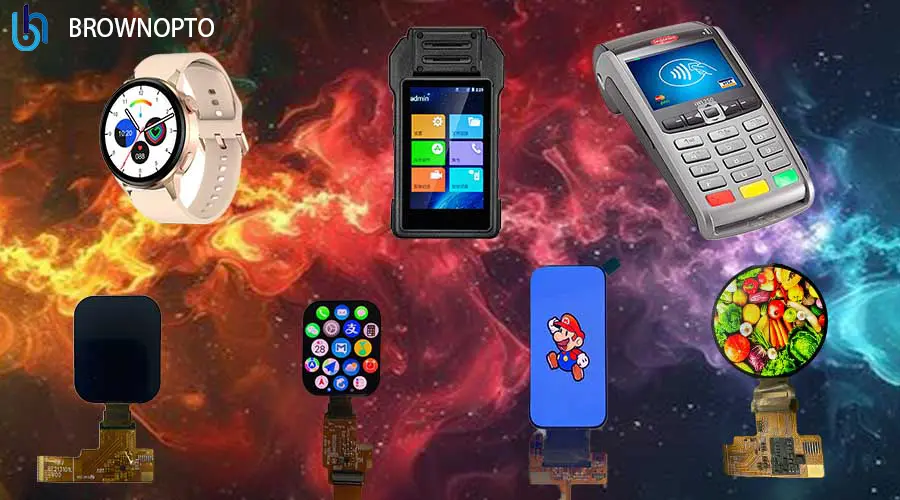
OLED 디스플레이 기술 개요
OLED(유기 발광 다이오드) 디스플레이는 백라이트 없이 픽셀 단위로 빛을 생성합니다. 이를 통해 진정한 검정색, 무한한 명암비, 그리고 빠른 응답 속도가 구현됩니다.
AMOLED 대 PMOLED
PMOLED(수동 매트릭스 OLED):구조가 간단하여 소형 디스플레이(예: 웨어러블 기기)에 적합하지만 크기와 수명이 제한적입니다.
AMOLED(능동 매트릭스 OLED):정밀한 픽셀 제어를 위해 TFT 백플레인을 사용하므로 대형 고해상도에 이상적입니다.industrial OLED displays.
제어 시스템을 위한 OLED의 주요 이점
고대비(100,000:1):밝거나 어두운 환경에서 가독성을 위해 중요합니다.
초박형 폼 팩터:0.6mm만큼 얇아서 완벽합니다.임베디드 설계를 위한 컴팩트 OLED 모듈.
낮은 전력 소비:특히 어두운 UI를 표시할 때 이상적입니다.자동화용 저전력 OLED 패널.
넓은 시야각(178°):어느 각도에서도 색상이 변하지 않습니다.
프로젝트 배경 및 목표
고객 요구 사항
한 선도적인 산업 장비 제조업체는 새로운 소형 제어판을 위한 디스플레이 솔루션을 찾고 있었습니다. 주요 요구 사항은 다음과 같습니다.
좁은 하우징에 맞게 7인치 미만의 디스플레이 크기
햇빛과 어두운 환경에서도 선명한 데이터 시각화
-20°C ~ +70°C의 온도 범위에서 작동
최소한의 유지관리로 24시간 연중무휴 운영 가능
기술적 목표
야외 가시성을 위한 높은 밝기(≥600니트)
동적 데이터에 대한 빠른 응답 시간(<0.1ms)
원활한 MCU/FPGA 통합을 위한 MIPI DSI 또는 SPI 인터페이스
산업 안전을 위한 RoHS 준수 및 낮은 EMI
OLED 디스플레이 모듈 선택 및 통합
올바른 OLED 디스플레이 모듈 선택
평가 후, 1080×1920 해상도와 MIPI 4레인 인터페이스를 갖춘 6.0인치 AMOLED 모듈이 선정되었습니다. 저가형 모델에는 4.3인치 SPI 기반 모듈이 고려되었습니다.
통합 프로세스
하드웨어 연결:임피던스 매칭 PCB 트레이스를 통해 STM32H7 MCU에 연결된 MIPI DSI.
드라이버 IC 설정:감마 보정 및 색상 보정을 위해 구성된 SSD1351입니다.
펌웨어 적응:주변광 센서를 기반으로 동적 밝기 제어를 구현했습니다.
테스트:검증된 재생 빈도(60Hz), 색상 정확도(ΔE < 3), 열 안정성.
과제 및 해결책
전력 효율:부분 디스플레이 모드와 자동 밝기 조절 기능을 사용해 전력을 25% 줄였습니다.
EMC 설계:EMI를 15% 줄이기 위해 페라이트 비드와 접지 차폐를 추가했습니다.
기계적 적합성:맞춤형 베젤 디자인으로 컴팩트한 하우징에 안전하게 장착할 수 있습니다.
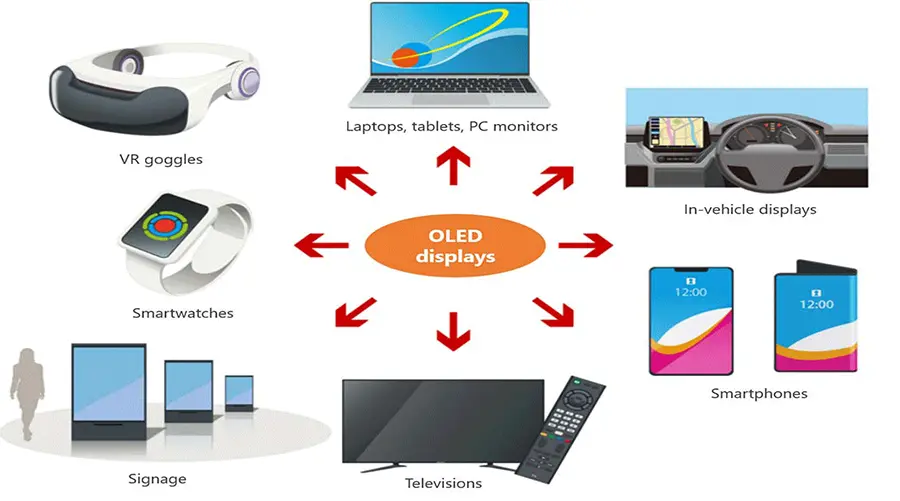
통합 OLED 모듈의 주요 기술적 특징
| 매개변수 | 값 | 혜택 |
|---|---|---|
| 디스플레이 유형 | AMOLED(액티브 매트릭스) | 선명하고 생생한 이미지 |
| 크기 | 6.0인치 | 컴팩트한 패널에 이상적 |
| 해결 | 1080×1920 | 높은 데이터 가독성 |
| 명도 | 600니트 | 뛰어난 야외 가시성 |
| 대비율 | 100,000:1 | 깊은 검은색과 선명함 |
| 인터페이스 | MIPI 4레인 / SPI | MCU와 호환 가능 |
| 작동 온도 | -20°C ~ +70°C | 산업적 신뢰성 |
| 일생 | 5만 시간 | 장기 운영 |
응용 프로그램 시나리오
산업용 제어 패널
공장 자동화 대시보드, PLC 인터페이스 및 HMI 시스템에 사용됩니다.산업용 모니터용 고대비 OLED소음이 많은 환경에서도 가독성을 보장합니다.
의료 및 실험실 장비
정확한 색상 재현을 통한 실시간 생체 신호 모니터링으로 진단을 내립니다.
스마트 홈 및 IoT 컨트롤러
저전력 OLED는 벽면 장착형 스마트 허브와 환경 센서의 배터리 수명을 연장합니다.
자동차 및 운송용 디스플레이
대시보드와 인포테인먼트 시스템은 폭넓은 온도 허용 범위와 햇빛 아래에서도 읽기 쉬운 장점을 가지고 있습니다.
임베디드 시스템을 위한 OLED 디스플레이의 장점
전력 효율성 및 긴 수명:백라이트가 없으면 전력 소모가 적습니다. 특히 어두운 UI에서는 더욱 그렇습니다.
향상된 가독성 및 시야각:극단적인 각도에서도 색상이 변하지 않습니다.
마이크로컨트롤러와의 쉬운 통합:MIPI, SPI, I²C를 지원하므로 펌웨어 개발이 간소화됩니다.
환경 친화적:RoHS 규정을 준수하는 소재와 재활용 가능한 구성 요소.
사례 결과 및 성과 결과
통합은 성공적이었으며 측정 가능한 개선 사항이 나타났습니다.
✅ 전력 사용량 25% 감소기존 LCD 솔루션과 비교
✅ 2배 향상된 밝기 균일성화면 너머로
✅ EMI 방출 15% 감소EMC 인증 통과
✅ 긍정적인 고객 피드백사용성과 안정성에 관하여
자주 묻는 질문
제어 시스템에서 OLED와 TFT의 차이점은 무엇입니까?
OLED 디스플레이는 자체 발광이 가능하여 백라이트에 의존하는 TFT LCD보다 진정한 검은색과 높은 대비도를 제공합니다. 또한 OLED는 더 얇고 어두운 UI에서 전력 효율이 높아 자동화용 저전력 OLED 패널에 이상적입니다.
OLED 디스플레이는 고온에서도 작동할 수 있나요?
네. 산업용 OLED 모듈은 -20°C에서 +70°C까지 안정적으로 작동하도록 설계되었습니다. 일부 모델은 적절한 열 관리 기능을 통해 최대 +85°C까지 지원합니다.
OLED는 24시간 연속 작동에 적합합니까?
물론입니다. 최신 산업용 OLED는 최대 50,000시간의 수명을 자랑합니다. 적절한 밝기 관리와 픽셀 재생 알고리즘을 통해 제어실과 의료 기기에서 24시간 연중무휴 작동하는 데 적합합니다.
OLED 패널을 다양한 인터페이스에 맞게 사용자 정의할 수 있나요?
네. 맞춤형 OLED 디스플레이 제조업체로서 저희는 MIPI, SPI, I²C, LVDS 및 병렬 RGB 인터페이스를 지원합니다. 또한 드라이버 IC를 내장하고 신속한 통합을 위한 SDK도 제공합니다.
산업용 OLED 모듈의 일반적인 수명은 얼마입니까?
대부분의 산업용 OLED 모듈은 정격 수명이 50,000시간(50% 밝기 기준)입니다. 최적화된 사용 패턴을 사용하면 수명이 훨씬 길어져 산업용 OLED 디스플레이 애플리케이션의 장기 사용에 이상적입니다.
결론 – OLED 기술을 활용한 제어 시스템 발전
6.0인치 AMOLED 디스플레이를 컴팩트한 제어 시스템에 통합함으로써 혁신적 잠재력이 입증되었습니다.제어 시스템용 OLED뛰어난 화질, 낮은 전력 소비, 완벽한 MCU 통합을 갖춘 OLED 기술은 임베디드 디스플레이의 미래를 새롭게 정의하고 있습니다.
산업용 HMI, 의료 기기 또는 스마트 컨트롤러를 설계하는 경우맞춤형 OLED 디스플레이 제조업체최적의 성능과 안정성을 달성하는 데 도움이 될 수 있습니다.
맞춤형 OLED 솔루션이 필요하신가요?무료 상담을 원하시면 저희에게 연락하세요.
지금 연락하세요최신 기사
-
2025년 AR/XR의 핵심은 1~2인치 AMOLED
AR/XR 붐에서 1~2인치 AMOLED 디스플레이가 필수가 되는 이유(2025년 산업 통찰력) 본문 {f
-
Understanding OLED Display Technology: Principles, Performance & Applications
OLED (Organic Light Emitting Diode) displays are a class of self-emissive display technology in whic
-
From Wearables to AR Glasses – How OLED Displays Are Redefining Visual Experiences in 2025
By 2025, OLED (Organic Light-Emitting Diode) technology has transitioned from luxury smartphone disp
-
Stretched Bar LCD Displays for Retail: Boost Sales & Engagement in Supermarkets
스트레치 바 LCD 디스플레이가 슈퍼마켓 선반 가장자리 마케팅을 향상시키고 매출을 늘리고 비용을 절감하는 방법을 알아보세요.
-
레스토랑 및 호스피탈리티 장소를 위한 스트레치 LCD 솔루션
스트레치 LCD는 레스토랑 메뉴와 호스피탈리티 서비스에 적합한 세련되고 고휘도 디스플레이를 제공합니다.

